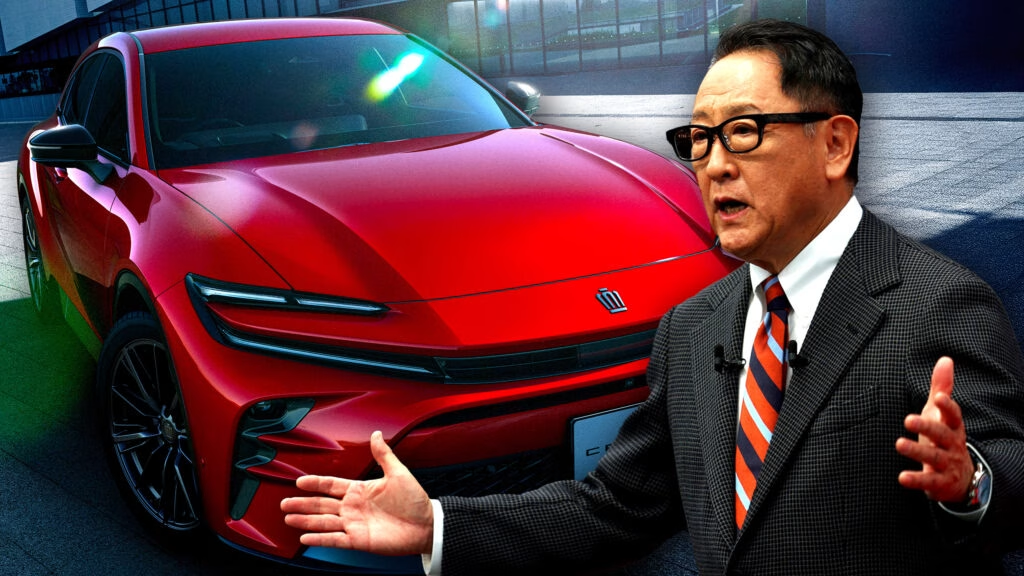Chairman Akio Toyoda of Toyota has made it clear: the company’s commitment to carbon neutrality is unwavering. In a world where electric vehicles (EVs) are often hailed as the ultimate solution to our environmental woes, Toyoda offers a different perspective. He argues that the road to a cleaner future is not as straightforward as it seems, especially when you consider the broader implications of energy sources and vehicle emissions.
### Why Is Toyota Cautious About Going All-Electric?
While many automakers are racing towards full electrification, Toyota is taking a more measured approach. The company has been a pioneer in hybrid technology, with a staggering 27 million hybrids sold worldwide. According to Toyoda, these hybrids have had an impact equivalent to that of 9 million battery electric vehicles (BEVs). This statistic raises an eyebrow, especially when he points out that if those 9 million BEVs were produced in Japan, they could actually increase carbon emissions due to the country’s reliance on fossil fuels for electricity generation.
This perspective challenges the common narrative that EVs are the panacea for climate change. Sure, they produce zero tailpipe emissions, but what about the emissions generated during their production and the electricity needed to charge them? It’s a complex equation, and Toyoda believes that hybrids still play a crucial role in the transition to greener transportation.
### The Hybrid Advantage
Hybrids have been Toyota’s bread and butter since the launch of the Prius in 1997. They offer a practical solution for consumers who may be hesitant to fully commit to electric vehicles. In regions like Europe and North America, where charging infrastructure can be patchy, hybrids provide a middle ground. They allow drivers to enjoy better fuel efficiency without the anxiety of running out of battery power.
In Toyoda’s view, the hybrid model is not just a stopgap; it’s a vital part of the solution. He emphasizes that the company’s focus is on reducing carbon dioxide emissions as quickly as possible, and hybrids allow for that immediate impact.
### A Multi-Faceted Approach to Carbon Neutrality
Toyota’s strategy is not limited to hybrids. The company is also investing in plug-in hybrids, hydrogen fuel cell vehicles, and even synthetic fuels. This multi-faceted approach reflects a belief that there is no one-size-fits-all solution to the challenges of climate change. Instead of putting all their eggs in one basket, Toyota is keeping its options open.
Toyoda has been vocal about the potential pitfalls of an all-electric future. He has suggested that fully electric vehicles may only capture about 30% of the global market in the long run. This caution stems from concerns about job losses in Japan and the broader implications of a rapid shift to EVs.
### The Bigger Picture
As the automotive landscape continues to evolve, it’s essential to consider the broader implications of our choices. While the allure of electric vehicles is undeniable, the reality is that the transition to a sustainable future is complex. Factors like energy sources, infrastructure, and consumer readiness all play a role in shaping the future of transportation.
Toyota’s approach, as articulated by Toyoda, is about more than just selling cars. It’s about finding effective ways to combat carbon emissions while considering the realities of the current energy landscape. By focusing on hybrids and other technologies, Toyota aims to provide consumers with viable options that can lead to meaningful change.
The big takeaway? Toyota’s strategy isn’t about perfection—it’s about making smarter adjustments. Whether you’re a car enthusiast or just someone interested in the future of transportation, it’s clear that the path to sustainability is filled with twists and turns. Start with one change this week, and you’ll likely spot the difference by month’s end.

